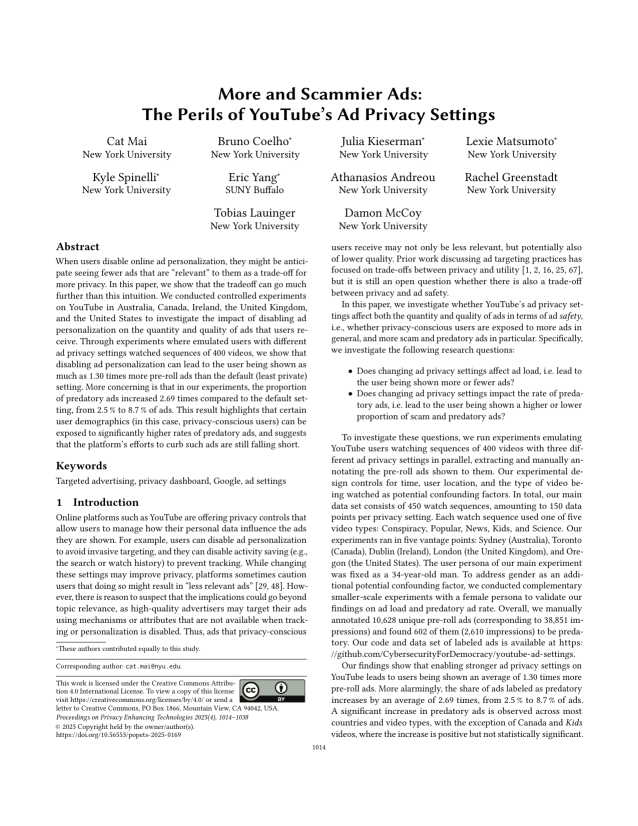More and Scammier Ads: The Perils of YouTube's Ad Privacy Settings
Authors: Cat Mai (New York University), Bruno Coelho (New York University), Julia Kieserman (New York University), Lexie Matsumoto (New York University), Kyle Spinelli (New York University), Eric Yang (SUNY Buffalo), Athanasios Andreou (New York University), Rachel Greenstadt (New York University), Tobias Lauinger (New York University), Damon McCoy (New York University)
Volume: 2025
Issue: 4
Pages: 1014–1038
DOI: https://doi.org/10.56553/popets-2025-0169
Abstract: When users disable online ad personalization, they might be anticipating to see fewer ads that are "relevant" to them as a trade-off for more privacy. In this paper, we show that the tradeoff can go much further than this intuition. We conducted controlled experiments on YouTube in Australia, Canada, Ireland, the United Kingdom, and the United States to investigate the impact of disabling ad personalization on the quantity and quality of ads that users receive. Through experiments where emulated users with different ad privacy settings watched sequences of 400 videos, we show that disabling ad personalization can lead to the user being shown as much as 1.30 times more pre-roll ads than the default (least private) setting. More concerning is that in our experiments, the proportion of predatory ads increased 2.69 times compared to the default setting, from 2.5% to 8.7% of ads. This result highlights that certain user demographics (in this case, privacy-conscious users) can be exposed to significantly higher rates of predatory ads, and suggests that the platform's efforts to curb such ads are still falling short.
Keywords: targeted advertising, privacy dashboard, google, ad settings
Copyright in PoPETs articles are held by their authors. This article is published under a Creative Commons Attribution 4.0 license.

